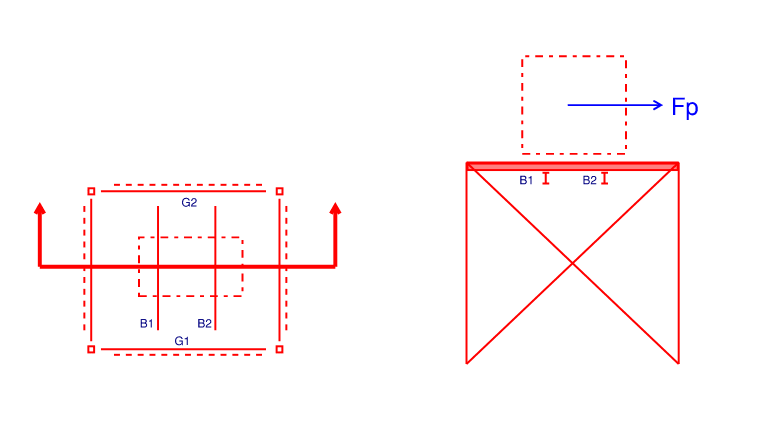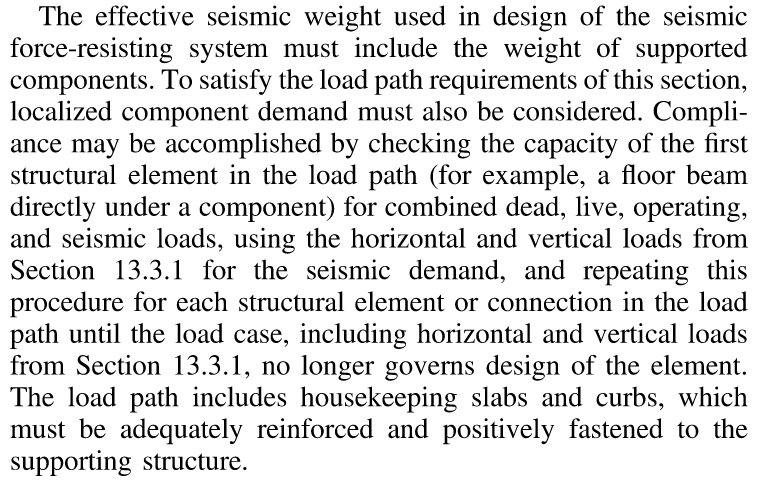Nick6781
Structural
- May 15, 2024
- 30
Per the first sentence of ASCE7-10 ch.13 - " This chapter established minimum design criteria for nonstructural components that are permanently attached to structures and for their supports and attachments. "
For illustration purposes, let's say we have a one-story steel-braced building with a concrete diaphragm roof. There's a generator on the roof. The screenshot below shows this.

When I do the lateral design of the building, I understand that the generator weight should be included per 12.7.2 -3 total operating weight of permanent equipment.
When I design the attachment and support for the generator per chapter 13, do I need to check everything along the load path of Fp? Technically, the generator is "supported" by everything along the load path of Fp. Additionally, the effect of Fp may be different from the story shear. For instance, Fp has both a moment and a horizontal force effect on the braced frames, while originally, the frames may have been designed using a horizontal shear only.
However, it still feels redundant to me to check them again.
I must admit, I'm finding this aspect of the design process quite perplexing. I'm eager to hear your insights and suggestions on this matter.
Also, how should this be checked in a computer model? Create a separate load case for Fp and combine it with other gravity loads?
For illustration purposes, let's say we have a one-story steel-braced building with a concrete diaphragm roof. There's a generator on the roof. The screenshot below shows this.

When I do the lateral design of the building, I understand that the generator weight should be included per 12.7.2 -3 total operating weight of permanent equipment.
When I design the attachment and support for the generator per chapter 13, do I need to check everything along the load path of Fp? Technically, the generator is "supported" by everything along the load path of Fp. Additionally, the effect of Fp may be different from the story shear. For instance, Fp has both a moment and a horizontal force effect on the braced frames, while originally, the frames may have been designed using a horizontal shear only.
However, it still feels redundant to me to check them again.
I must admit, I'm finding this aspect of the design process quite perplexing. I'm eager to hear your insights and suggestions on this matter.
Also, how should this be checked in a computer model? Create a separate load case for Fp and combine it with other gravity loads?

